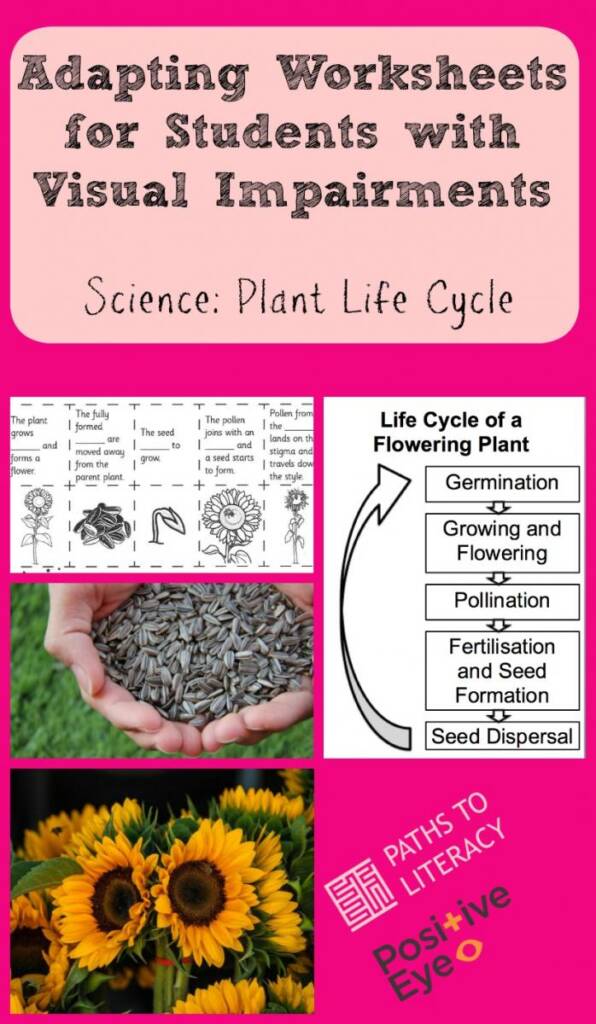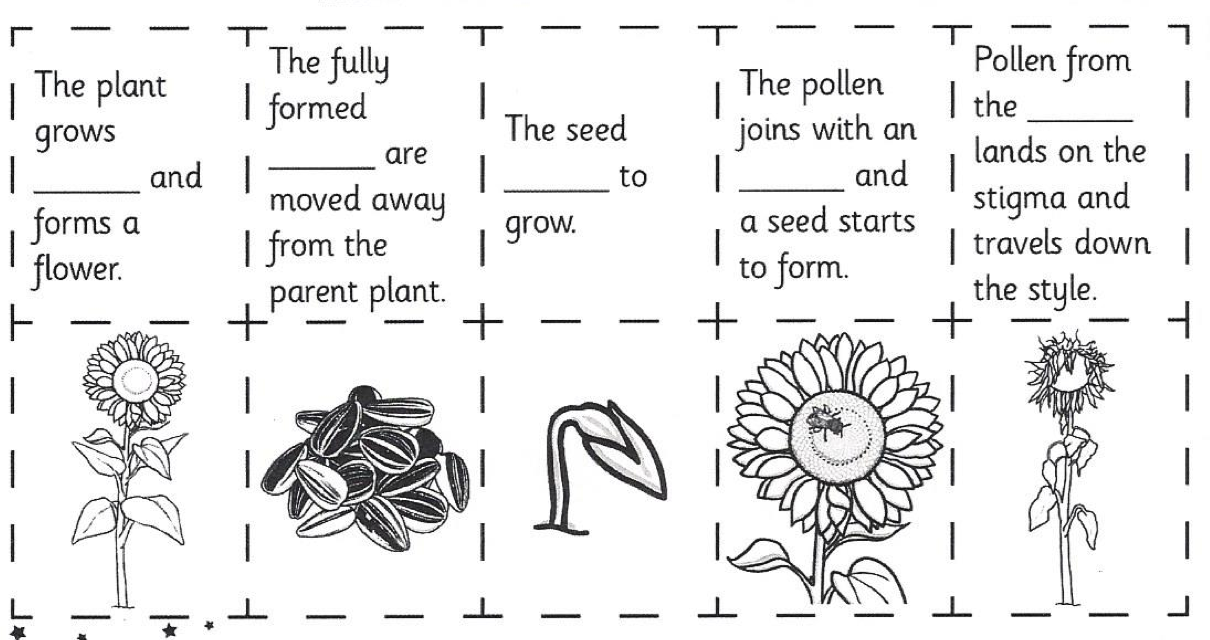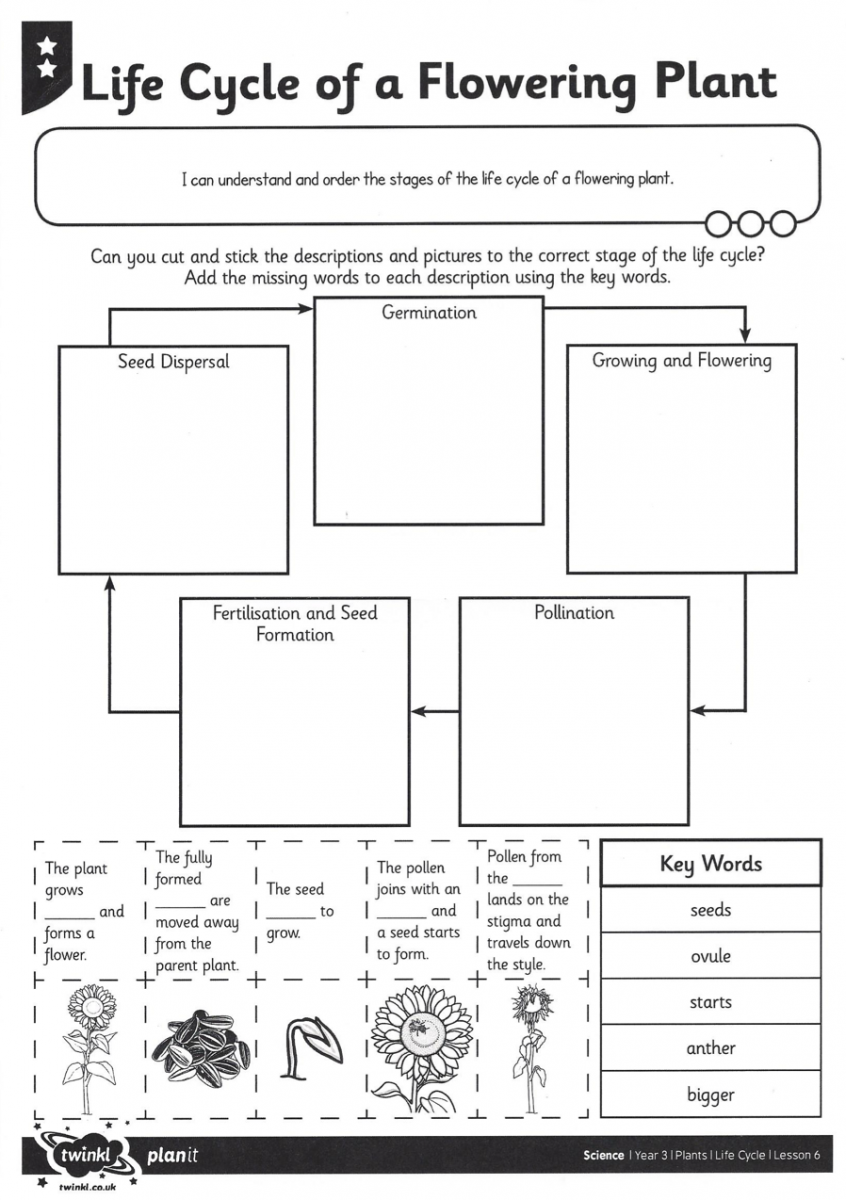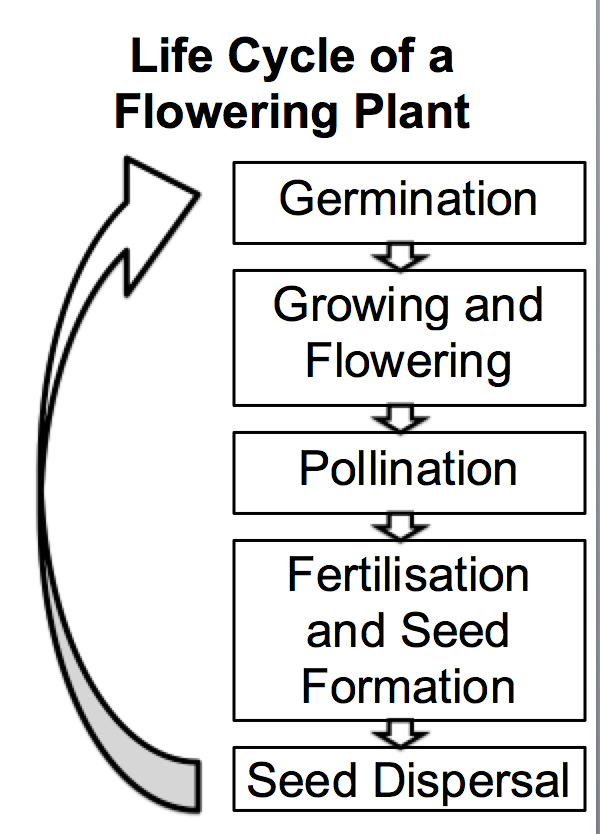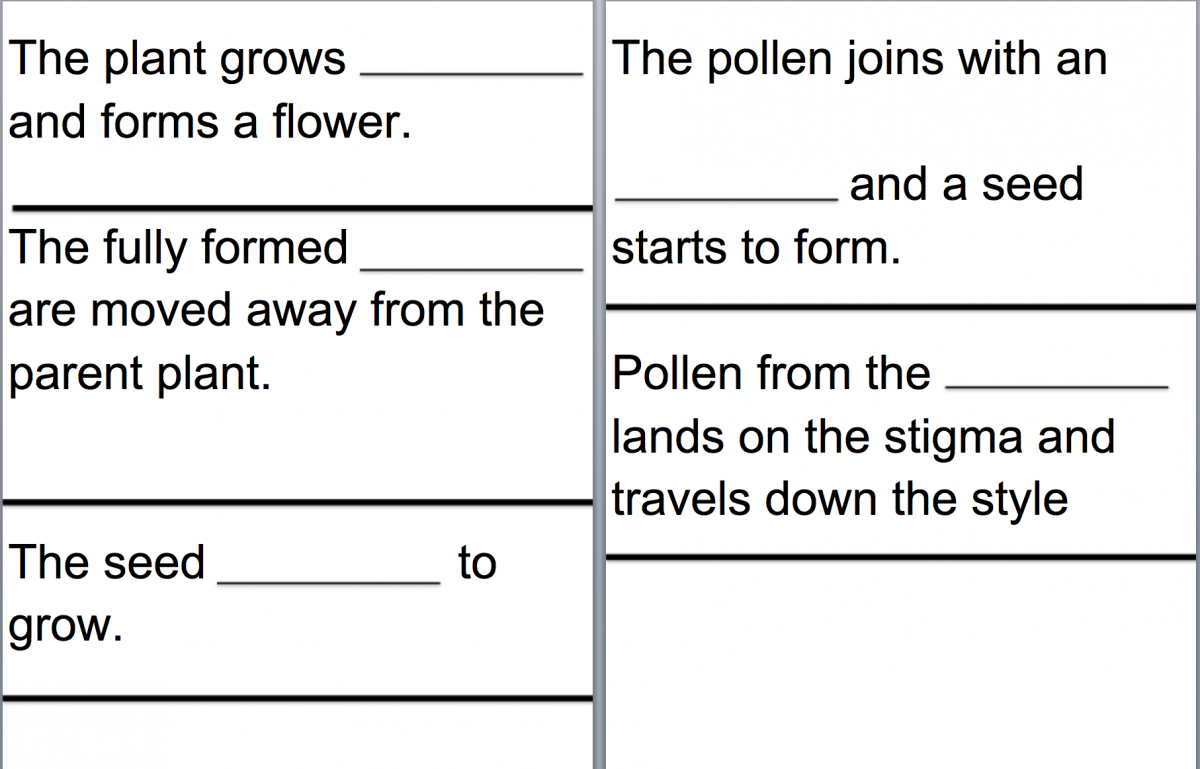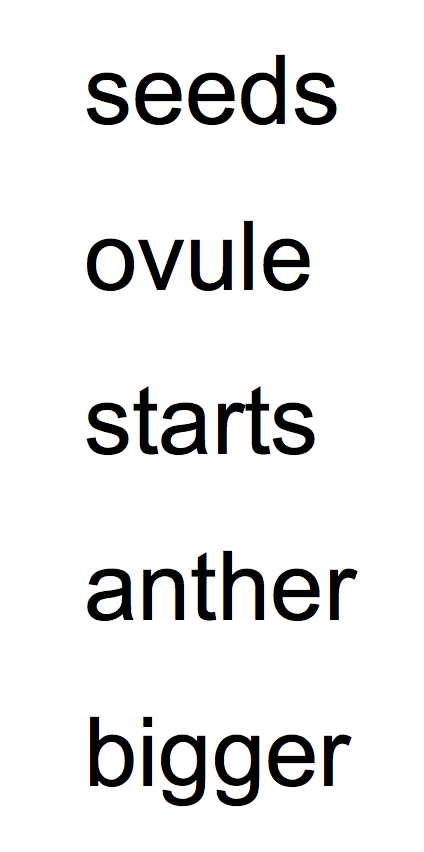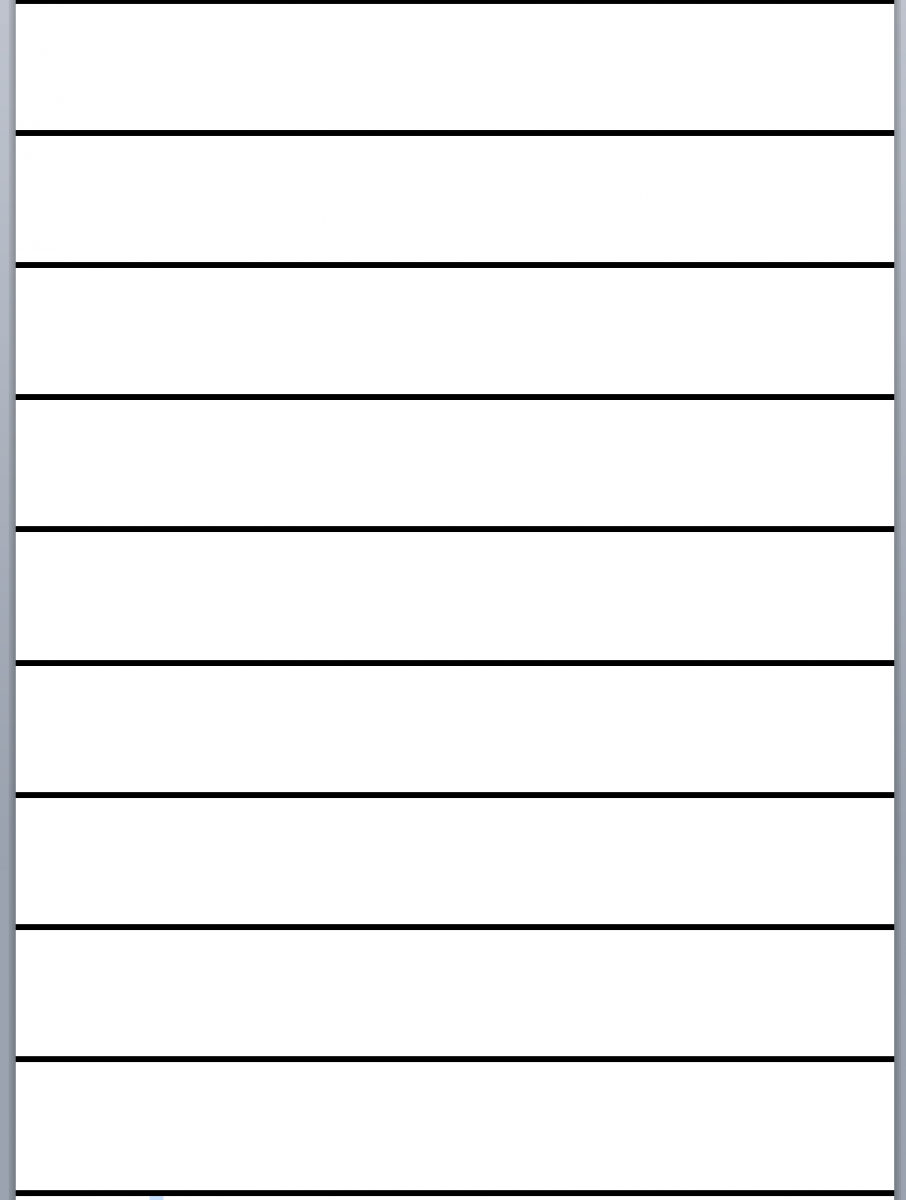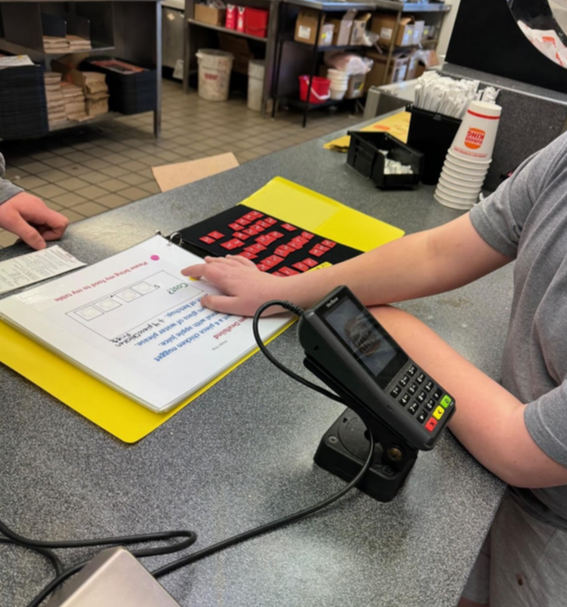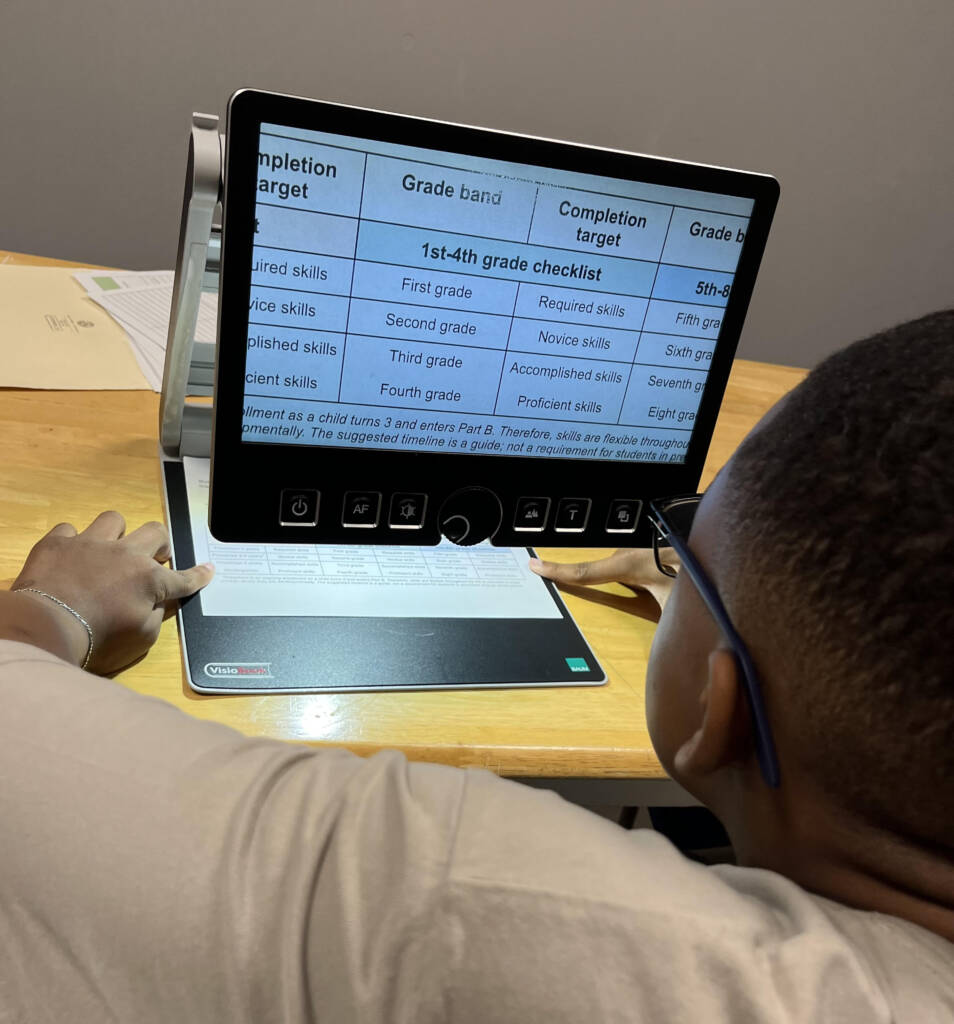This strategy is part of a series on Adapting Worksheets. Please see the introductory post for an overview of adapting worksheets for students who are blind or visually impaired.
Thought Process in Adapting Worksheet
This worksheet is ideal, as the learning objective is clearly stated underneath the title. The pupil must show that they understand and can order the stages of the life cycle of a flowering plant.
For a sighted pupil, I have produced a diagram that shows the cycle. I have then made a separate task sheet where the pupils must fill in the missing key words. Students can either write directly on the paper or they can use the address labels with key words printed, or key word cards that they can place in the gaps provided. If appropriate for the pupil, they can then cut along the thick black line and place the sentences in order, or alongside the diagram showing the cycle. This will allow them to demonstrate the ordering of stages of the life cycle. I have used Arial, size 48 for this example. I have removed clutter such as dotted lines, unnecessary borders and the diagrams. I felt that the diagrams were not necessary for a pupil with VI and may cause confusion. Consider using real objects, such as a sunflower, dying sunflower or a representation of this (e.g. crepe paper), sunflower seeds and a plant beginning to sprout.
For non-sighted pupils I would definitely use real objects to represent each stage and try to order the real objects in terms of the cycle. If the pupil is a braille user, I would produce a brailled sheet with the sentences on it and use brailled key word cards to fill in the gaps. If the pupil is a competent braille reader, you could cut the sentences up and ask the pupil to place these in order.
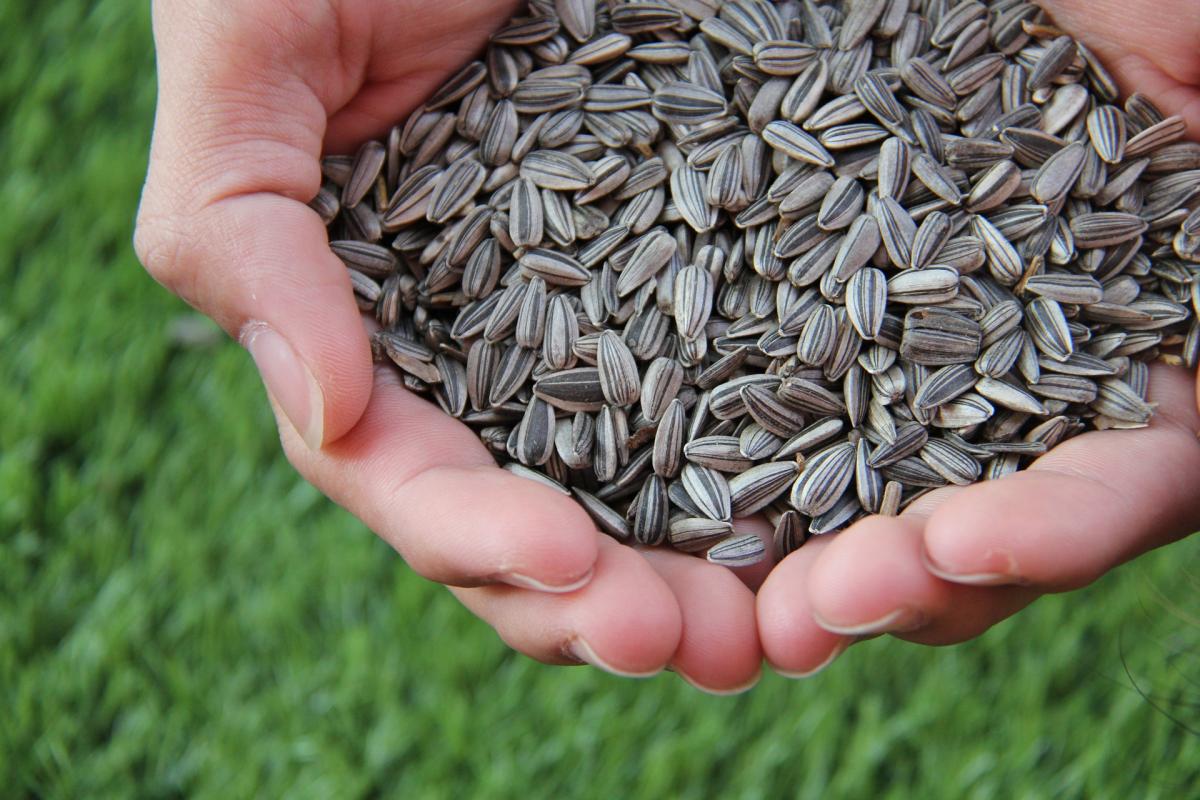

Adapting the Worksheet
The original worksheet is on the left and the diagram showing the life cycle has been adapted on the right with a clearer progression.
Filling in Missing Words
I created this new sheet for filling in the missing words.
